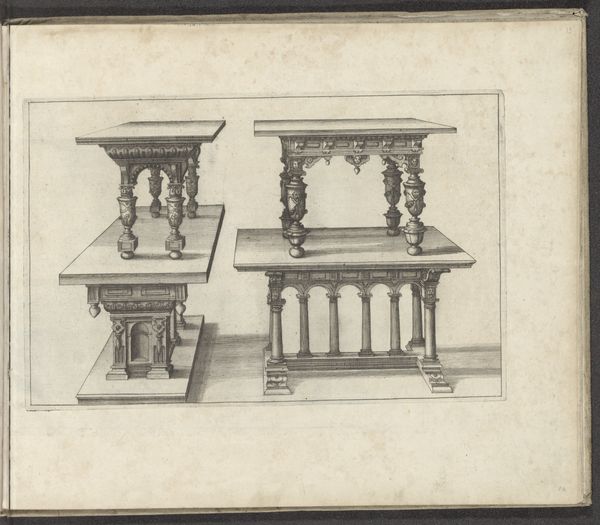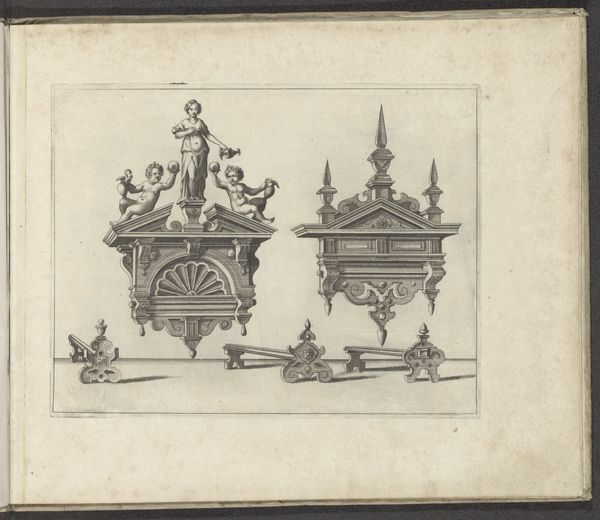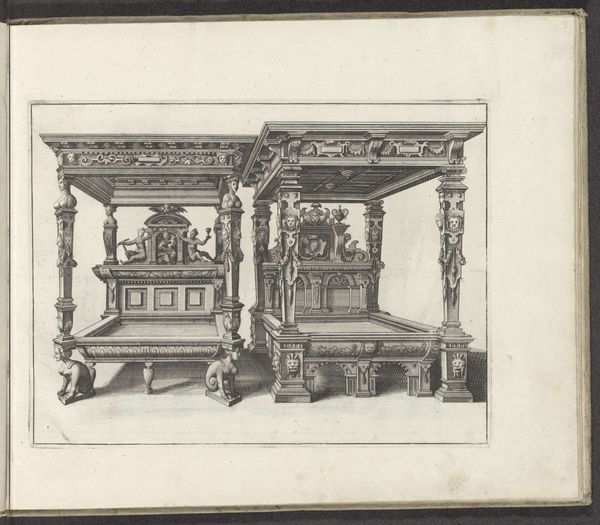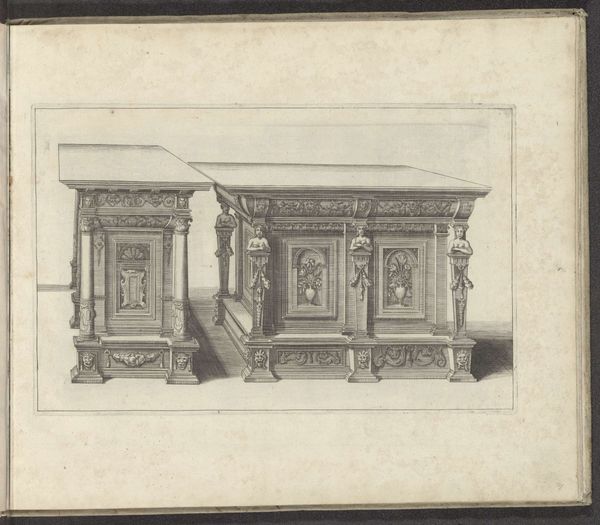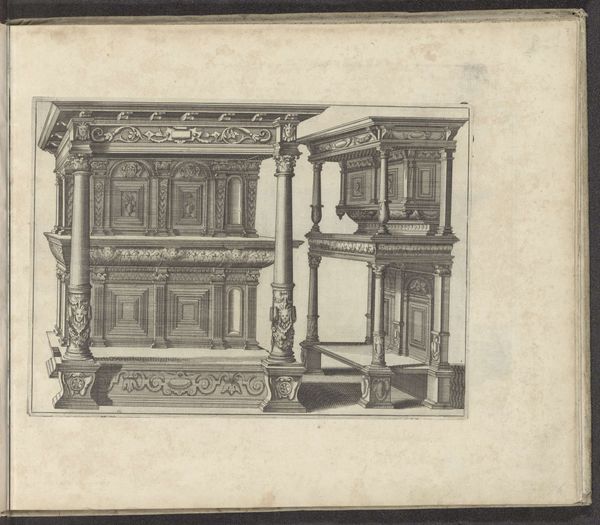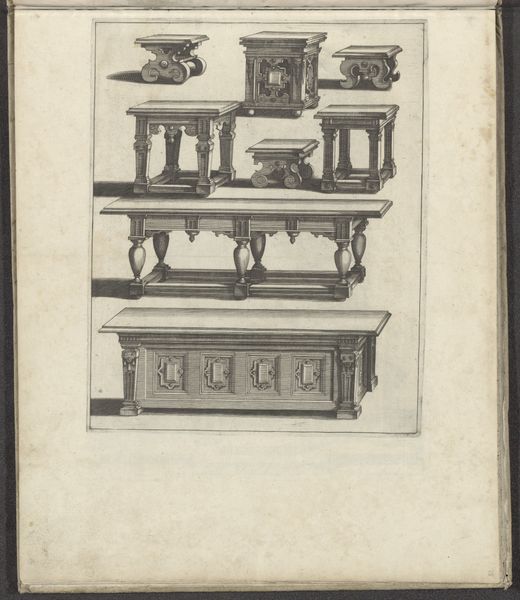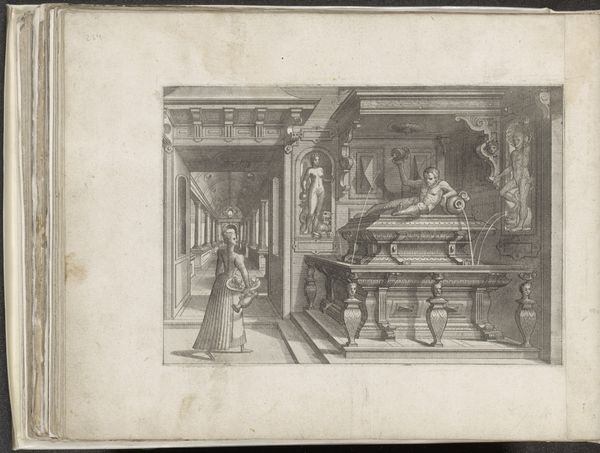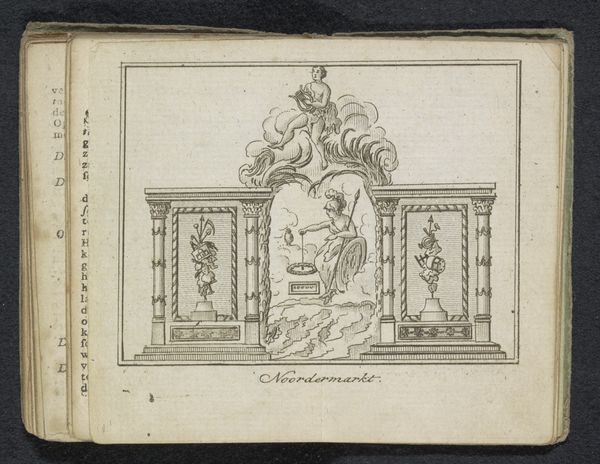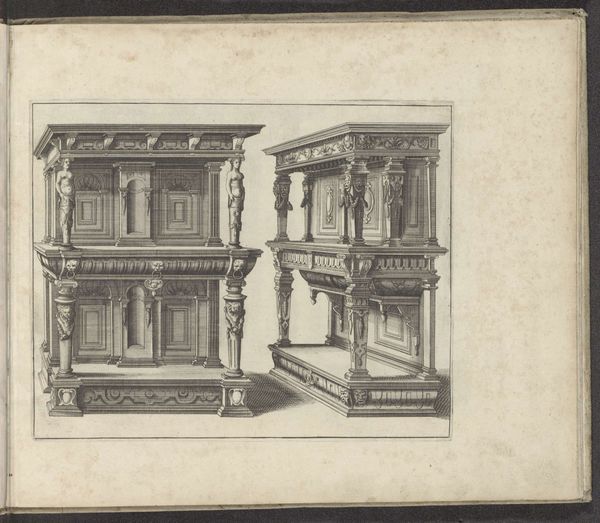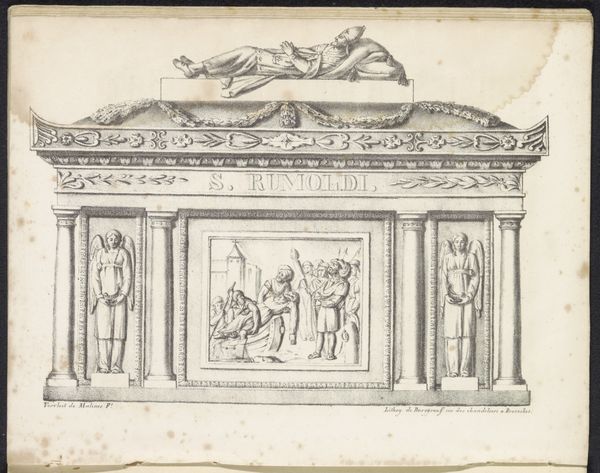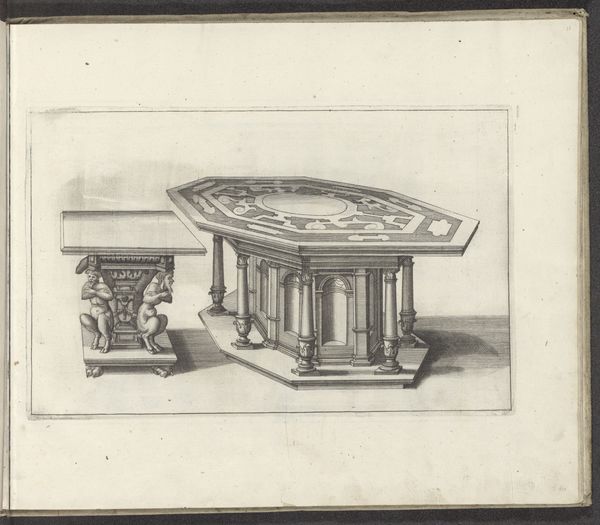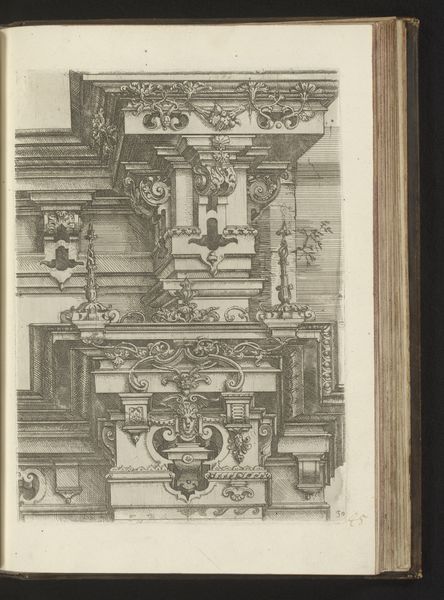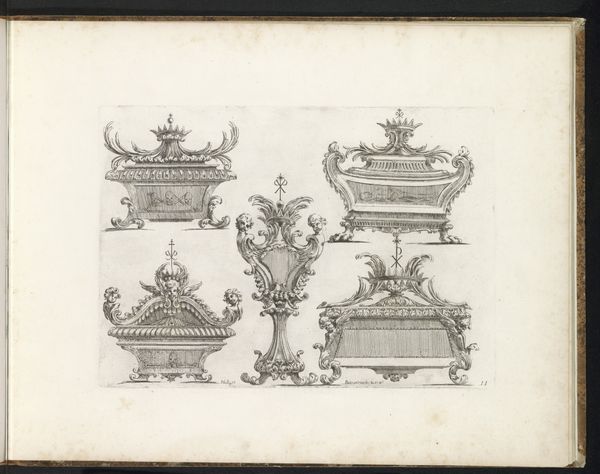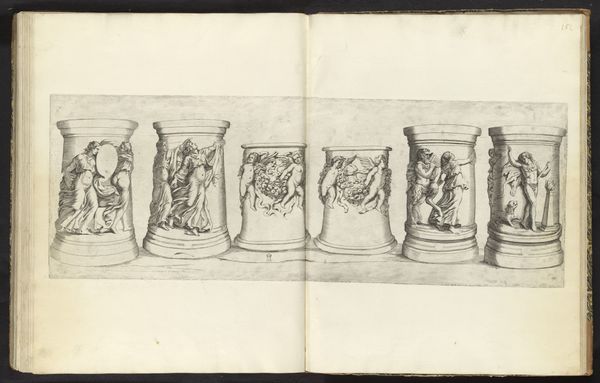
drawing, print, engraving
#
drawing
#
baroque
# print
#
furniture
#
history-painting
#
engraving
Dimensions: height 204 mm, width 280 mm
Copyright: Rijks Museum: Open Domain
Curator: Welcome. We are looking at “Vier Tafels,” or "Four Tables," an engraving from 1658. It’s a fascinating glimpse into Baroque design. Editor: Yes, a strong sense of theatricality and excess is the immediate take away. Each table design incorporates robust figural elements—cherubs, lions, sphinxes. You can almost feel the weight. Curator: Absolutely. In its time, an image like this would have been circulated among elite circles, acting as both an aspirational catalogue and a status symbol itself. The ownership of such elaborate furniture indicated wealth and social standing. Editor: Thinking about the production, one has to consider the workshop system that would have facilitated the creation of the original tables, each requiring distinct artisanal labor from carving to finishing. Curator: Good point. These tables are not simply functional objects, are they? They speak to the prevailing tastes for ornamentation but also power, of both earthly and spiritual forces—as conveyed through the mythological creatures depicted as support structures. Editor: True, and the printmaking technique itself allowed for wider access to designs that were often realized using rich, rare materials. Curator: I wonder if viewers appreciated how those prints enabled them to share similar visual culture despite geographic and political barriers? These images spread ideals. Editor: Perhaps it provided something similar to contemporary maker culture - the pleasure of creating a vision by assembling found material to a personal expression that is based upon your culture? These historical forms can still inspire design today. Curator: It definitely makes you think about design, utility, art, and aspiration. It's like peeking into another world and seeing their material desires. Editor: Yes, tracing the hand in this era always connects you to a broad landscape of economic and cultural exchange, from the quarry where the stone originated to the tables' location after being built, so to speak.
Comments
No comments
Be the first to comment and join the conversation on the ultimate creative platform.
